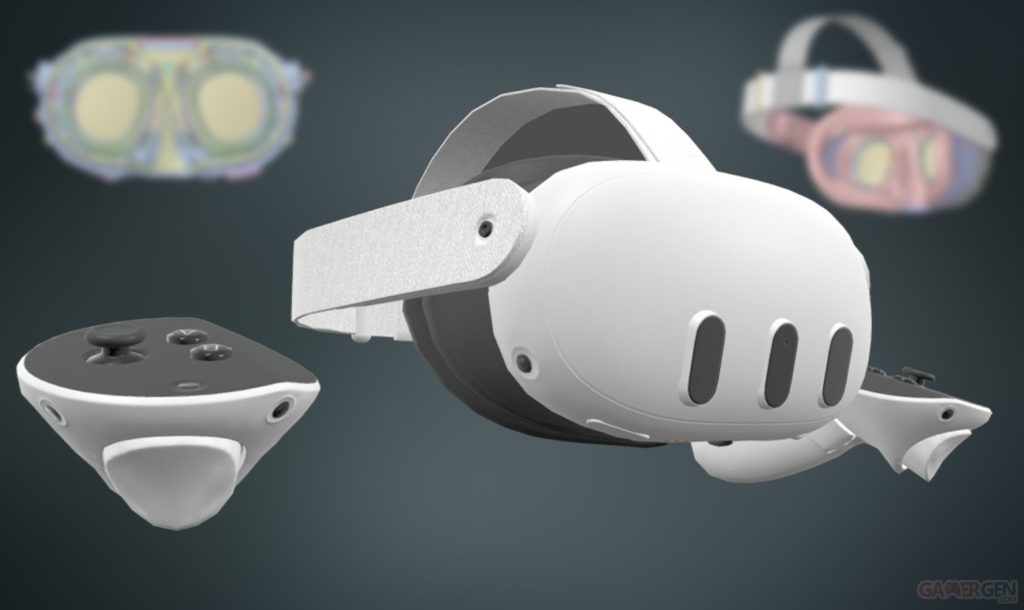
In recent years, we’ve witnessed an exponential growth in the field of wearable technology. As technology evolves, the debate has emerged regarding the future of wearables, specifically the battle between Virtual Reality (VR) headsets and Smart Glasses. This article explores these two avenues and discusses the potential they hold in the ever-changing tech landscape.
The Quest 3 VR Headset: A Glimpse into the Metaverse Future
The Quest 3 by Meta, previously known as Oculus, is the latest addition to the VR headset market, showcasing the company’s shift towards mixed reality. This VR headset’s mission is to bridge the gap between immersion and real-world interaction, making it a possible contender for everyday use.
In the past, VR headsets have typically provided complete immersion, isolating users from their real-world surroundings. The Quest 3, however, takes a different approach. With improved pass-through technology, it allows users to experience high-quality, color stereo vision, enabling better connectivity to the real world.
One remarkable feature of the Quest 3 is its ability to scan the surrounding environment in real-time, eliminating the need for manual setup. This innovation streamlines the user experience, making VR more accessible and convenient.
The Quest 3’s hardware is powered by the Qualcomm Snapdragon XR2 chip, boasting higher resolution per eye, an immersive field of view, and enhanced comfort due to a new strap for improved weight distribution. As a result, it provides a seamless gaming experience, supporting all games compatible with its predecessor, the Quest 2, along with some specifically optimized for Quest 3.
The standout feature of the Quest 3, however, is its hand tracking capabilities. Users can interact with the virtual world naturally, using gestures to navigate menus, move and manipulate objects, and more. The integration of hand tracking brings VR closer to mainstream adoption, creating a more intuitive and immersive experience.
The Quest 3’s pass-through feature, while a significant leap forward, is not quite on par with the Apple Vision Pro, which sets a benchmark for pass-through quality. Nonetheless, considering its affordable price point at around $500, the Quest 3 delivers a compelling VR experience.
Meta Smart Glasses: A Peek into the Future of Everyday Tech
Meta, formerly Facebook, is also exploring the world of smart glasses with their RayBan Meta Smart Glasses, or RayBan Stories. While currently more limited in functionality due to their compact design, these smart glasses offer insights into where wearable technology is headed.
The RayBan Meta Smart Glasses come equipped with a 12-megapixel camera, an LED light ring for capturing images and videos, a shutter button, and a built-in computer with storage, a touchpad, and microphones. They also feature tiny pinhole speakers that deliver audio directly into the user’s ears. These features are primarily focused on enhancing audio-visual experiences and human-computer interactions.
These glasses are designed to be inconspicuous, resembling regular eyewear, but still, serve as a platform for future innovations. The voice assistant built into the glasses enables hands-free control, allowing users to send and receive messages, listen to music, and make voice-activated queries. The glasses have seamless integration with the Meta View app, which further expands their capabilities.
The key strength of the Meta Smart Glasses is their ability to handle voice-activated tasks efficiently. Users can easily control their glasses and access information, which makes them a viable choice for activities that rely on audio input, such as listening to music, answering calls, or asking for information.
The downsides to these smart glasses are their limited battery life, which can be extended with the provided wireless charging case. This highlights that smart glasses still face challenges in terms of power efficiency due to their compact size.
The Road Ahead: VR vs. Smart Glasses
The tech industry is currently witnessing a fascinating race between VR headsets and smart glasses. Meta, in particular, is investing in both technologies. The direction companies choose will significantly impact the future of wearables and how they integrate into our daily lives.
While VR headsets like the Quest 3 offer an immersive experience, their usage remains primarily centered around gaming and immersive content. On the other hand, smart glasses, exemplified by the RayBan Meta Smart Glasses, are striving to blend technology seamlessly into our daily routines with voice-activated capabilities.
The challenge is to miniaturize technology to fit into inconspicuous eyewear, making it more socially acceptable and convenient for everyday use. As advancements in technology continue, these wearables will likely evolve further, eventually converging into a single form factor that combines the strengths of both VR headsets and smart glasses.
As technology continues to advance at an unprecedented pace, we find ourselves on the cusp of a transformative era. The wearables we’ll be using in the next decade will undoubtedly appear futuristic compared to today’s devices, mirroring the rapid evolution of tech over the past ten years. The question now is, which side are you betting on to lead the way into this wearable technology future?
In conclusion, the tech world is rapidly advancing towards the integration of computers into our everyday lives. Whether you favor the immersive experience of VR headsets or the subtlety of smart glasses, both offer exciting possibilities. The future of wearables remains uncertain, but one thing is clear: technology will continue to reshape how we interact with the world around us.